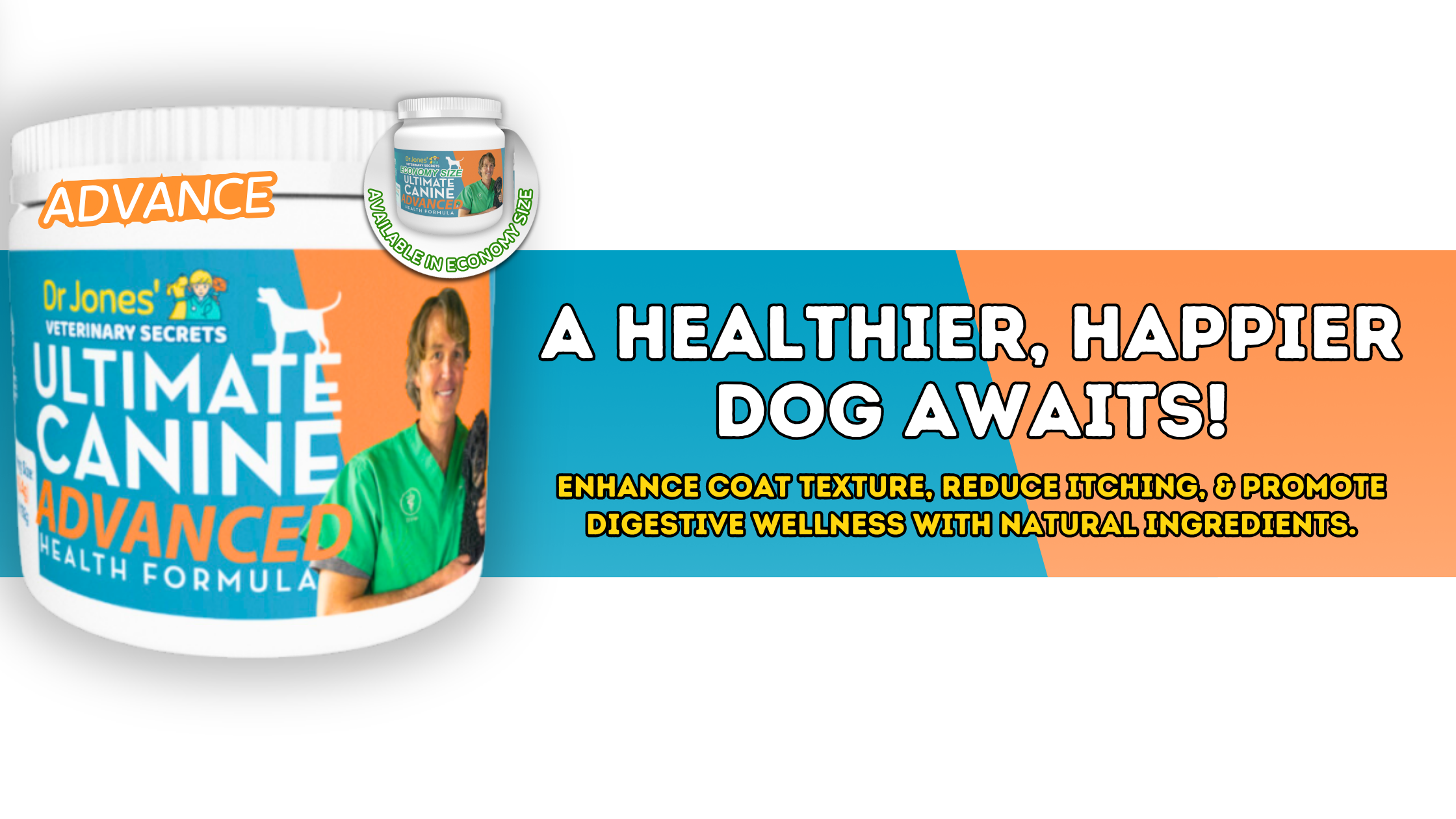Are Dog Treats Making Your Pet Sick? The Hidden Dangers of Toxic Treats
![]()

Can Dog Treats Make Your Pet Sick?
Did you know that giving your dog a treat could potentially make them sick? Most of you are probably thinking, “No, that’s not possible," but think again. In the last ten years, over 5,000 cases have been reported where dogs developed kidney disease as a result of eating contaminated jerky treats. This condition is called Fanconi Syndrome, a rare type of kidney disease caused by toxins that damage the kidneys.
In this video, we’re going to head to our local big-box store, where many pet owners buy the majority of their dog treats, to see if these potentially harmful treats are still for sale. Let’s find out what’s safe and what’s not when it comes to feeding your dog.
The Problem with Contaminated Dog Treats
Over 6,500 sick dogs, approximately 56 cats, and three people have been affected by contaminated jerky treats. What’s more concerning is that the FDA has reported more than 1,100 dogs have died due to toxin-induced kidney failure linked to these treats.
Dogs eating these jerky treats develop an unusual type of kidney disease known as Fanconi syndrome, leading to kidney failure and, sadly, death. But the question is, what can you do to protect your pet?
What I Found at the Store: A Cautionary Tale
During my visit to the big-box store, I came across a treat called Winkies Pig Skin made by Hartz. This was one of the closest options to chicken jerky treats I could find. The packaging claimed that these treats were “no rawhide, oven-baked" with ingredients like pig skin, chicken, and sorbitol.
While it might seem harmless, the ingredients list was concerning—especially with potassium sorbate, which raised red flags. Moreover, the product was made in China. Based on my experience, these are the types of treats you should be cautious about feeding your dog.
A Safer Alternative: Freeze-Dried Lamb Liver
On the other hand, I found a treat called Pure Snacks Freeze-Dried Lamb Liver, which was much more promising. It had only one ingredient: freeze-dried lamb liver, proudly sourced from New Zealand and freeze-dried in the USA. This type of treat is a great, healthy alternative, with 100% natural ingredients that are safe for your dog.
But here’s the thing: just because a treat is healthy doesn’t necessarily mean your dog will like it. So, I also tested it out with Lissy, and she loved it!
What Should You Feed Your Dog? Guidelines to Follow
Now, what can you do to ensure you’re feeding your dog a safe and healthy treat? Here are my three essential rules to follow:
-
Real Food:
Make sure the treat is real food. Can you make it at home? For example, you can dehydrate lamb liver yourself. But can you make pig skin wrapped with chicken at home? No, that’s not real food. -
Not from China:
Avoid treats that come from China. Whenever possible, choose locally sourced treats from North America—whether it’s from the U.S., Canada, or elsewhere in North America. The majority of reported cases of contaminated dog treats have been linked to treats imported from China. -
Moderation is Key:
This is especially important for small-breed dogs. Most poisonings have occurred in smaller breeds, so treat moderation is crucial. Treats should be just that—an occasional treat, not a primary food source. I encourage training with treats, but limit the number given in a day. For example, Lissy might get a few treats when training, but the bulk of her nutrition comes from her regular, healthy food.
In Conclusion: Healthy Treats in Moderation
By following these three simple steps, you’ll be on the right track to ensuring that you’re feeding your dog a safe and healthy treat. Just remember that moderation is essential, and always be cautious about the source and quality of the treats you give.
Thanks for watching this edition of Veterinary Secrets! If you found this video helpful, please hit “Like" below and “Subscribe" to my channel. Also, feel free to click the link in the description box to sign up for my newsletter, where you’ll receive my free books and videos on how to heal your pets at home with my top natural remedies.

The FDA has reported over 1,100 dogs dying from imported toxic dog treats – and no one has yet been able to identify the cause. Dr Jones shows you what to avoid, what is safe, and what you should be feeding your dog.
Share this video and subscribe (it’s free!) for more videos every Tuesday and Friday! http://goo.gl/P8nNvh
P.S. Here are Made in the USA Supplements that are Effective, Safe and Natural to Help your dog!
http://www.thedogsupplement.com
FDA News Release:
https://www.fda.gov/AnimalVeterinary/NewsEvents/CVMUpdates/ucm500776.htm








Hi Dr,
I hv seen also treats from USA but at the back of very very small print stated “made in china”
Maybe u can highlight too because many people dont look at the small print or do very detail check.
Thanks.
That is a good suggestion
it was so sad to see her go down so fast after we found it. I make all their treats home made now. When we do buy we buy made in North America! Thanks for the lesson and making everyone aware of what comes out of China.
Hi Jeannie- so you are saying you had a dog affected by toxic jerky treats? And she turned out OK?
Really appreciate the info in your u-tube presentation. I will make a good effort to find the the little “made in china” labels.
Your point re if you can make the treat at home with natural ingredients you won’t be giving your dogs toxins-so simple and safe.
You can take this out of my comments if you decide to put this on your web site. Maybe I did not see this correctly but it looks like your pooch is not seat belted in the car. I know there is some controversy about this. Could you maybe do a u-tube regarding this. I had basset hounds that I belted into the back seat to keep then from becoming a missile if I was in a car accident. Are the seat belts strong enough
Hi Katherine- appreciate the comments and feedback..she is usually in her kennel, but at times I let her run loose in the car..as you said much better to be buckled in.
to continue-to hold in an eg basset hound or any other large size dog or any dog?
Thank you for the reminders about dog treats, especially for the smaller ones!!! You mentioned before in a video to remind us that treats can be a piece of raw (or cooked) meat or carrots or other food that is a treat. I like the one ingredient treat especially since it is from NZ animals.
Also, it is good to remember much of our food (USA) is coming in from China, so consider the consequences if purchasing it. As Dr. J says, buy locally. And I love that the lady above makes her own treats at home. Brava to you, Katherine!
You are fantastic, Dr. Jones!!! Keep up the great work! I am thankful every day that you are doing this work instead of being a vet in a clinic pushing Big Pharma on your Rx pad. Your moral compass is true north! Thank goodness for all of us out here!
Thank You Narbara
Thank you! It’s common sense one would think. My dogs love carrots – I buy the small organic baby carrots…they go crazy over them. 🙂
Thank you Dr. Jones!
Thanks Monica
One of the biggest problems recently, here in the USA, is some of the big box stores are not even printing where our human food is from. Yesterday, I almost bought two different items without an expiration date. WE NEED TO BOYCOTT THESE CORPORATIONS!!! Also, we need to look for the state laws regarding the corporations bad business practices.
Good points
I always check where a food or treat is sourced before buying. At CVS, they have bagged treats with an American flag on front and back. In very fine print they say “made in China.” So don’t let the symbols fool you. Look all over for it to say Made in USA or go to LOCAL pet emporium and quiz an employee.